Geneto adds pointed roofline to Italian restaurant in Japan
Small triangular windows puncture the faceted roof and walls of this Italian restaurant in Japan designed by Kyoto studio Geneto (+ slideshow).
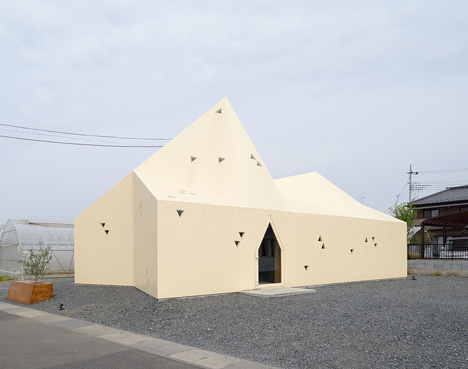
Geneto designed the L'Angolino restaurant for a site in the Japanese city of Tatebayashi, creating a pointed monocoque structure that the owner hopes will become a local landmark.
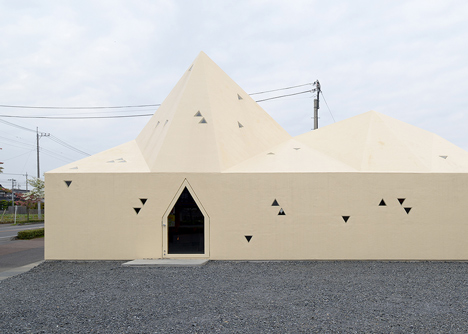
“The client is originally from here, and he has a strong feeling that his hometown should have identity, and that it needs a place that can be a foothold for local people,” said architect Asako Yamashita.
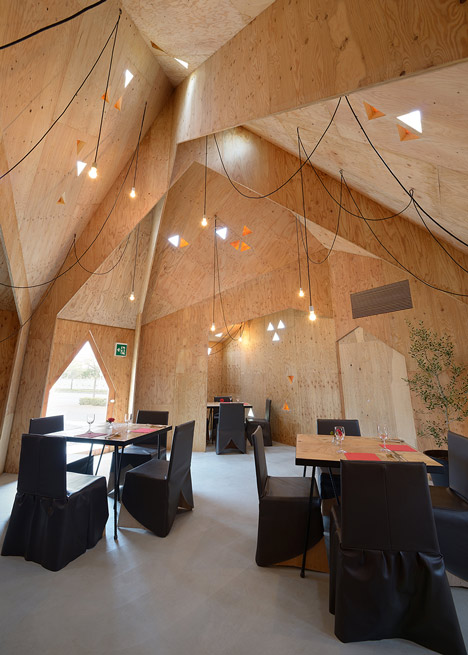
"We researched the building forms and the use in this town, and tried to create an opportunity to change the town by making a building form not existing here," she said.
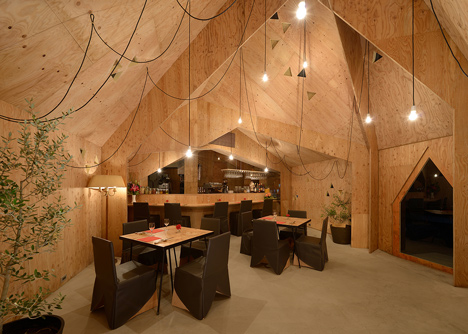
The owner wanted to build the restaurant himself, so Geneto planned a simple structure of reinforced plywood for easy construction. The exterior of this is covered in a waterproof layer of fibre-reinforced plastic.

The plywood structure was left exposed inside the restaurant. The pointed roof helps to subtly zone the different areas inside, with seating for guests beneath the tallest peak, and the kitchen and bar beneath a second, lower peak.
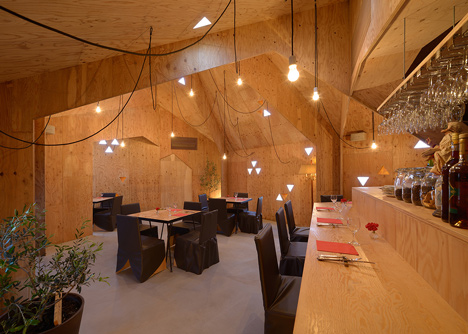
Small triangular windows were chosen rather than large areas of glazing. This allows only narrow shafts of light to enter, helping diners to feel removed from their roadside location.
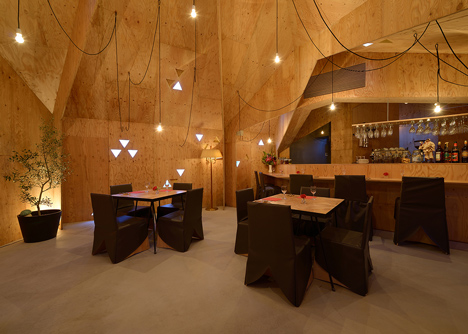
"We avoided connecting the inside and the outside directly by building small triangular windows," added the architect.
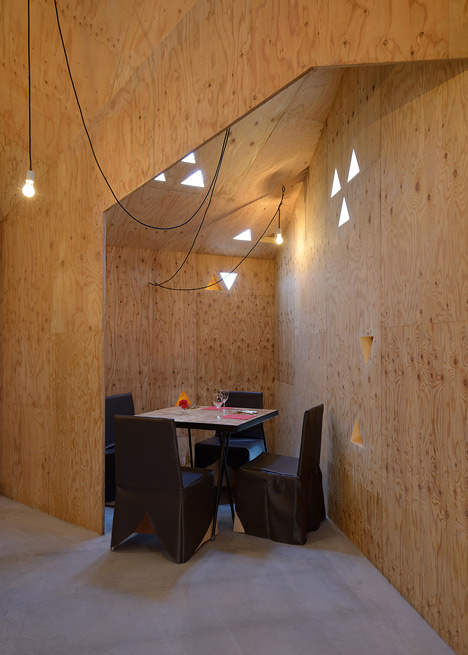
Geneto is a collective of five architects. Past projects by the studio include an apartment with diagonal walls to shield views from neighbours and a house where built-in plywood furniture divides spaces.
Photography is by Yasutake Kondo.
Here is some more text about the restaurant from Geneto:
L'Angolino restaurant, Tatebayashi, Gunma prefecture
This is an Italian restaurant in Gunma prefecture. In contrast to a big city, this town has a typical local city view. There are many chain stores and giant shopping stores along the roadside.
The client is originally from here, and he has a strong feeling that his hometown should have identity, and that it needs a place that can be a foothold for local people. We researched the building forms and the use in this town, and tried to create an opportunity to change the town by making a building form not existing here.
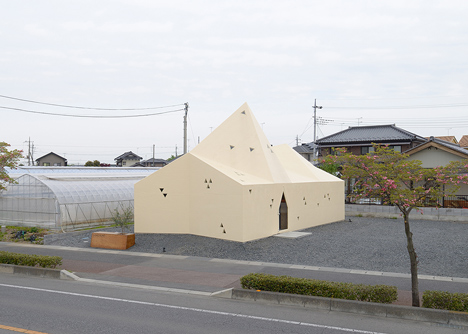
The client decided to self-build, and he had active communication with the locals passing by during construction. On the premise of the self-build and the building form not existing here, we conceived the simple structure by plywood.
The building form became the pointed roof shape not existing in this town. Its monocoque construction consisting of the structural plywood portal frame and the exterior wall. The exterior is covered with waterproof FRP.
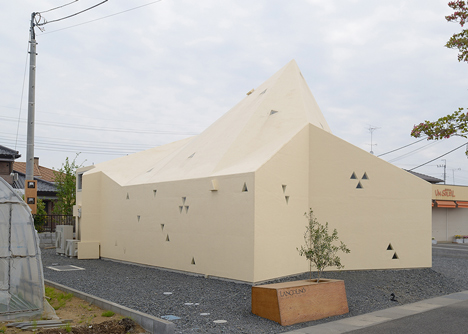
We avoided connecting the inside and the outside directly by building small triangular windows.
Inside, the space is separated gently by the portal frame crossing. The kitchen and the hall are in the same room, to create a lively aspect between chef and customer.
The structure resulted from considering the limited of skills necessary for self-build, and the building facade has created a totally different view in the town. We expect it will develop the identity as a landmark, where the locals get together.
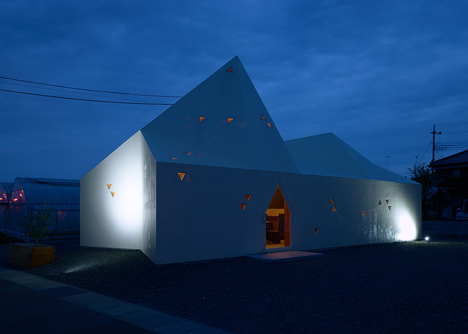
Architect: Geneto
Structural engineer: Takashi Takamizawa
Contract partner: Pivoto, Kazuhisa Sunaga
Site area: 278.05 sqm
Floor area: 60.95 sqm
Total floor area: 60.95 sqm
Exterior: Waterproof FRP
Walls and ceiling: Structural plywood
Construction methods: Monocoque structure of structural plywood